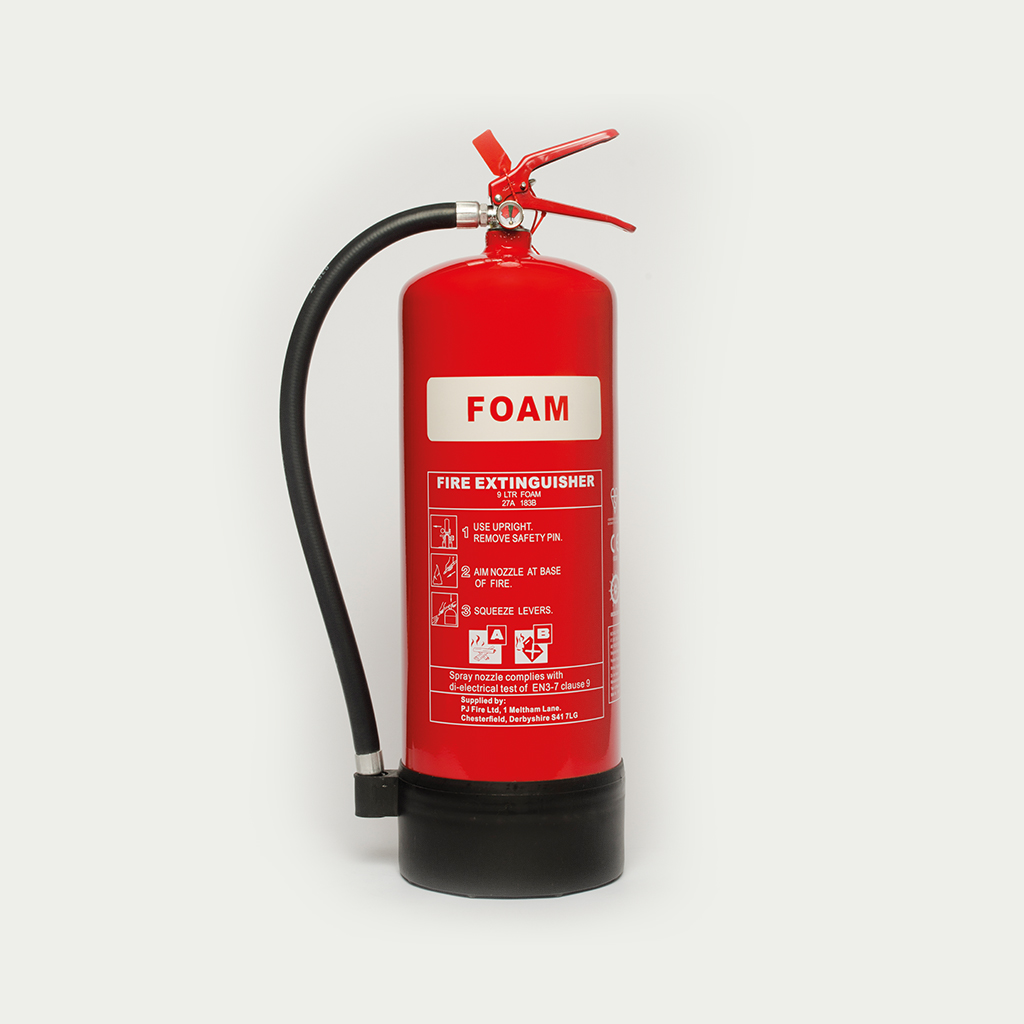A Guide to Fire Extinguishers by Location
May 18, 2022
Fire risks in different buildings and settings can vary greatly. Each risk may require a different solution and it’s important to cover each of them. Whether that is at work or in the home, it is important that those in the vicinity understand and have adequate training in using an extinguisher. This guide helps to provide some information and advice on suitable fire extinguishers.
Fire Extinguishers for Reception Areas
- Reception areas, lobbies and entrances can be some of the busiest areas of a building. They usually also have a number of different appliances, furniture and other flammable materials. They are a multiple fire risk area.
- Combination of Foam and CO2 Fire Extinguishers would be advisable. Foam would give general coverage for class A and B fires, while CO2 would be suitable to tackle electrical fires. Some foam extinguishers that have been dielectrically tested are also suitable for electrical fires.
Fire Extinguishers for Corridors and Stairways
- Corridor and stairways are often provide essential escape routes in an emergency, so while they may be considered a lower risk area, a proper provision is essential. Extinguishers from these areas may also be used in adjoining rooms in an emergency. If the stairway or corridor contains any electrical equipment or computers provision for electrical fires is important.
- Combination of Foam and CO2 Fire Extinguishers would be advisable. Foam would give general coverage for class A and B fires, while CO2 would be suitable to tackle electrical fires. Some foam extinguishers that have been dielectrically tested are also suitable for electrical fires.
Fire Extinguishers for Offices
- The biggest risk within modern offices is electrical equipment with workstations containing computers, stereos, shredders, printers etc.
- Combination of CO2 and Foam Extinguishers would be advisable. In an office environment the most likely fire would be electrical, in which case a CO2 extinguisher would be a good solution as it deprives the fire of oxygen while causing minimum damage to the surrounding area. It is important to note that they should not be used in confined spaces as they suffocate the fire, which can be dangerous to people when in a small space. A Foam extinguisher would be a sensible supplement to CO2 for any A or B class fires that may occur, such as furniture, waste paper bins or filing cabinets.
Fire Extinguishers for Kitchens
- Kitchens present a number of risks due to the nature of their use. Highly flammable substances, ignition sources and usually a limited space mean the potential for a fire is raised.
- For commercial kitchens a wet chemical fire extinguisher would be recommended, this is suitable for large chip pan fires and is the most commonly found in commercial kitchens and catering environments. For further information on wet chemical fire extinguishers please contact us directly on 01493 440464 or info@uksafetyproducts.com. For small kitchens or in the home a Fire blanket would be an extremely effective option. The most common kitchen fires are caused by chip pans, deep fat fryers and burning oil, and the best way to suppress this type of fire is by depriving it of oxygen. A fire blanket is a great solution for this as they are impregnated with flame retardant chemicals and suitable for quick application on small fires.
Fire Extinguishers for Cars
- While fire extinguishers are not a legal requirement for private cars, you may want to consider having one in your vehicle for added peace of mind. Having one close to hand if a fire breaks out may enable you to put it out quickly while limiting damage and risk to life. Outside of the UK carrying a fire extinguisher in your car may be a legal requirement so please check.
- ABC Dry powder extinguishers are the most recommended for petrol and diesel cars because of their ability to extinguish Class B (flammable liquid) fires. A 1kg or 2 kg extinguisher would be sufficient, stored out of direct sunlight and safely stowed so it is less likely to get damaged.
Fire Extinguishers for the Home
- Fire extinguishers for the wider home, (for the kitchen please see above) are linked to soft furnishings, furniture, fireplaces and smaller electric equipment.
- Foam extinguishers would give good general coverage for A and B Class fires, including gas fires. If you have a lot of electrical equipment, such as a home office, a suitable extinguisher for these areas should be considered. A CO2 extinguisher, may be advisable but me mindful of small spaces as CO2 poses a danger in confined areas where air flow may be limited.
Please note that we provide easy-to-understand guidance. To make detailed decisions about your fire safety needs, you might require further advice or need to consult the full standards, legislation or your insurance. Should you require further information or a fire risk assessment, please don’t hesitate to contact us 01493 440464 / info@uksafetyproducts.com. Our parent company, Flameskill, has over 30 years’ experience in providing fire and safety solutions and are specialists in the supply, service, maintenance and recertification of firefighting and safety equipment.
